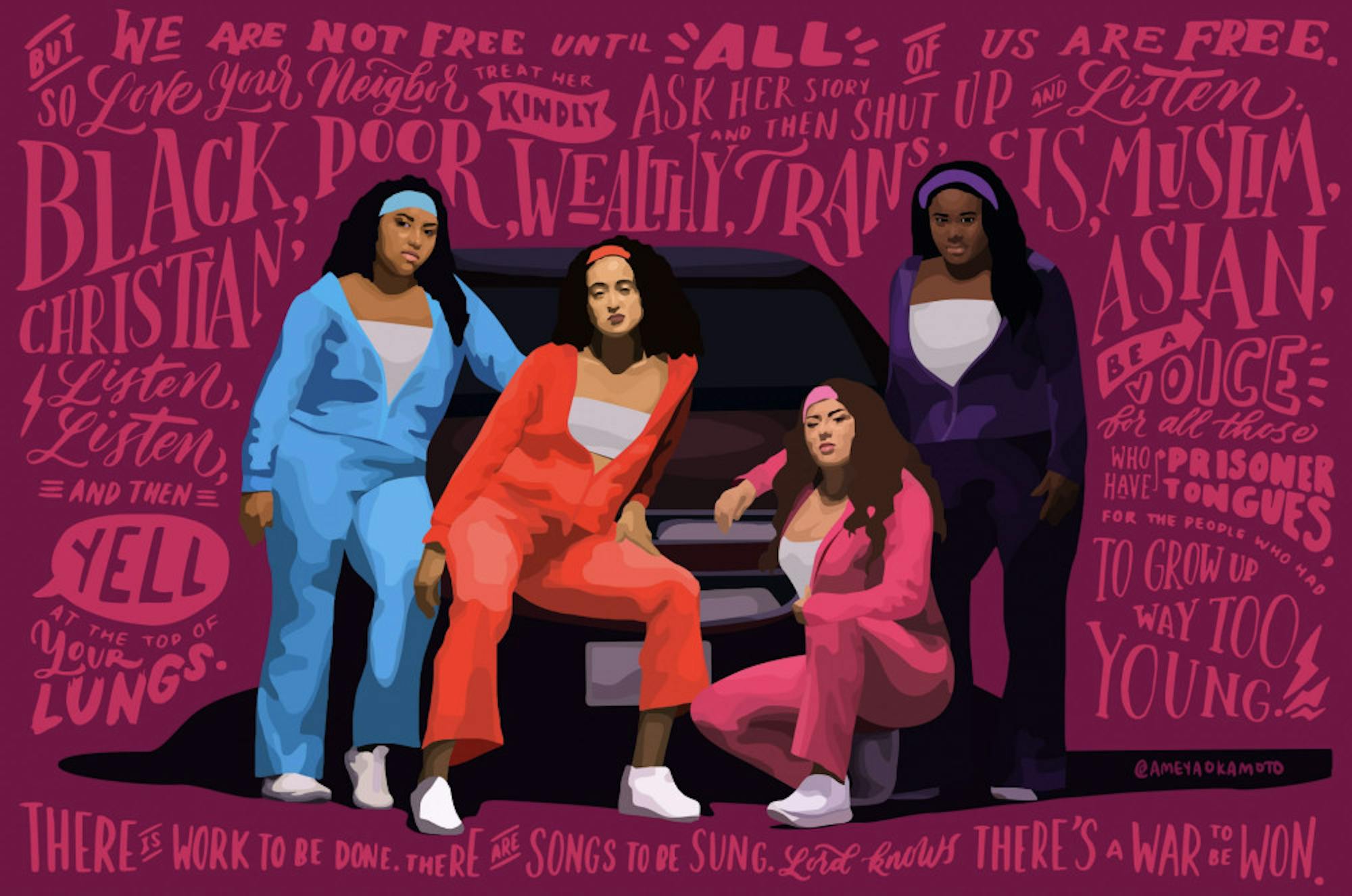Ameya Okamoto’s work lives at the intersection of art and action, of social justice and community, of hope and intentionality. With her art, she takes the world apart and puts it back together into tangible pieces that bring others into those intersections themselves.
Okamoto was born in New York, but at seven moved with her mother and sisters across the country to Portland, Ore. She experienced housing instability, changing schools six times in six years. In both New York and Portland, Okamoto grew up seeing a lot of injustice and violence, but she always had her loving mother and sisters as her strong foundation. She derives her inspiration to fight for social change from these experiences.
Her resume is incredibly impressive. Okamoto became a YoungArts Finalist in Visual Art and a U.S. Presidential Scholar in Art in 2018. She is also an Adobe Creativity Scholarand a Tufts Laidlaw Scholar. Because of her dedication to social justice and community action, Okamoto partnered with Don’t Shoot Portland and Black Lives Matter of Greater New York. She has also spent time creating art to better represent victims of police violence and call others to action.

It is in creativity that Okamoto found the ability to say what she feels is important for the world to hear and that she cannot find the words to say otherwise. Her art, therefore, is her process and vehicle to figure out how to communicate. But it goes beyond simply what she wants to say. Her dedication to social justice amplifies the voices and stories of others.
“For me it’s not just about myself. It’s about how I can be intentional about my positioning in the world to create art for everyone, that speaks to everyone,” Okamoto said. “At the basis of who I am and who I want to be in this world and everything I do is very much about how I can use my creativity and my creations to move us all forward."

One of the main roles that her art has taken on is in relation to protests, becoming “colorful, responsive calls to action.”
Okamoto noted that her art has developed throughout her career.
“In the past I have often described my art as balancing between the gallery world and the protest world in the streets. Some of the most inspiring moments in my life have been being able to have the honor of printing a lot of my posters out with local grassroots organizations for protests and seeing my work being carried by hundreds of people,” she said.
In the midst of so much hopelessness in 2020, Okamoto and her art generate inspiration.
“Hope is a really beautiful thing ... I think people can hold on to when it feels like they have nothing,” she said. “The general idea of [hope] is something that is really keeping me going.”
Now more than ever, people are struggling to find hope within all of the crises surrounding us. However, it is in this moment when artists play a vital role.
Okamoto discussed how artists can help in those difficult places and how she is “excited about a lot of artists beginning to create art that have deliberate call to actions ... artists are really needed right now.”
Part of hope is wanting to live in a different type of world. In order to achieve that, Okamoto believes in intentionality, which is another crucial element of her work. One of her hopes is that “we will get to a point where everything we are doing is very intentional.”

Because Okamato wants everyone to be active in their lives, she thinks of activism in a slightly different manner.
“I don’t self-identify as an activist. I don’t feel very comfortable with that term because I think everybody is an activist or should [be] an activist in their own way, whether that’s advocating for something they truly believe in or advocating for themselves. I don’t say activist, I say that we’re just active,” she said.
The active part of her art plays well into her current explorations of performance art. One recent performative piece she created was for YoungArt’s “do it (home)” project where she drew a singular, nonlinear “doodle” with chalk from the Lower East Side up to Spanish Harlem. Even with her recent leaning toward performance art instead of visual, the foundation of her work stays the same.
“The basis of my work is always community based, interactive based, about and with other people,” Okamoto said.
Despite remaining hopeful, Okamoto emphasized how there is so much pain right now and we must find ways through it — she hopes her art is one of those ways.






